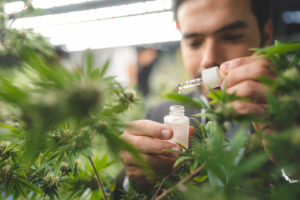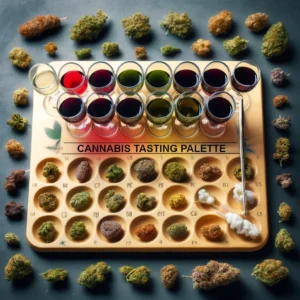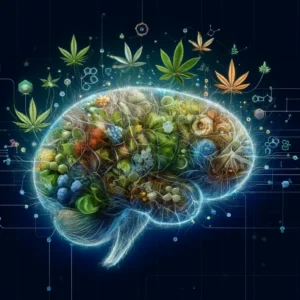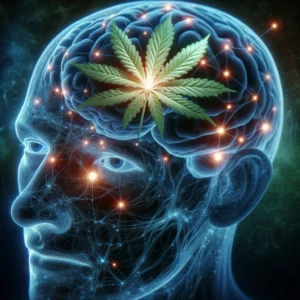Navigating the High Road: Cannabis and Other Medications
 In the modern landscape of enhanced wellness options, cannabis has emerged as a multifaceted plant with a growing list of uses, from chronic pain management to stress relief. People are turning to cannabis both for its recreational appeal and its acclaimed medicinal properties. However, with increased use comes the need for a deeper understanding of cannabis medication interactions, especially how cannabis can engage with the plethora of pharmaceuticals already integrated into our daily lives.
In the modern landscape of enhanced wellness options, cannabis has emerged as a multifaceted plant with a growing list of uses, from chronic pain management to stress relief. People are turning to cannabis both for its recreational appeal and its acclaimed medicinal properties. However, with increased use comes the need for a deeper understanding of cannabis medication interactions, especially how cannabis can engage with the plethora of pharmaceuticals already integrated into our daily lives.
This in-depth exploration is vital for any cannabis user, medical professionals, or anyone involved in the healthcare industry. We’ll unfurl the complex tapestry of interactions between cannabis and medications, shed light on safety concerns, and arm you with the knowledge to make informed choices.
The Basics of Cannabis
Before we delve into interactions, it’s essential to establish a common understanding of cannabis. Cannabis refers to a plant taxonomy that includes species like Cannabis sativa, indica, and ruderalis. It contains over a hundred naturally occurring compounds, called cannabinoids, with THC (tetrahydrocannabinol) and CBD (cannabidiol) being the most well-known for their effects on the human body.
The Cannabis Conundrum: Legal Interactions
The plant’s status is as varied as the climates it’s grown in. Where CBD might be widely available, THC is often strictly controlled, and recreational use may be illegal. Understanding the legal aspect of cannabis in your region is the first step to staying compliant and out of trouble.
How Cannabis Interacts with the Body
For cannabis to affect other medications, it must first interact with the body’s systems. The primary player in this dialogue is the endocannabinoid system (ECS), a network of receptors discovered in the late 1980s that affect many physiological processes.
Catalysts in the Body: THC and CBD
THC, with its psychoactive properties, binds primarily to the CB1 receptors in the brain and central nervous system, creating the “high” so often associated with cannabis. Conversely, CBD has low affinity for CB1 receptors, instead influencing the ECS through several other pathways, potentially modulating the effects of THC.
General Types of Interactions
When we talk about interactions between cannabis and drugs, we’re referring to how they modify each other’s effects. There are three main categories of these changes:
- Additive Effects: When cannabis and another substance have similar effects and their combined use enhances those effects.
- Synergistic Effects: In these instances, the substances work together to create a greater effect than either would on their own.
- Antagonistic Effects: These interactions result in one substance decreasing or canceling out the effect of the other.
Specific Interactions with Medications
Prior to altering the dosage of any medication, it’s important to consider the impact of cannabis. Here’s a look at how cannabis could interact with common medicaments:
Complications with Blood Thinners
Warfarin and other blood thinners are vital for countless individuals, but they also come with the risk of adverse effects like bleeding. Cannabis may exacerbate these risks due to its potential to alter the metabolism of certain drugs.
Balancing Act with Antidepressants
For those managing depression or anxiety with SSRIs, the possibility of enhanced effects when introducing cannabis is a significant concern. The combined action could lead to extreme sedation or other unwanted effects.
Lingering Hazards with Sedatives
Mixing sedatives with cannabis isn’t just about potentiation; it’s about patient safety. Enhanced sedative effects can lead to heightened drowsiness, respiratory depression, and an increased likelihood of accidents.
Epilepsy Meds and CBD
As CBD surge in popularity for its purported anti-seizure properties, those on epilepsy medications should approach this combination cautiously. Co-administration can impact serum levels and efficacy, which may necessitate dosage adjustments and close monitoring.
Factors Influencing Cannabis Interactions
The complexity of drug interactions is vast, and several factors come into play:
Dosage and Form
The method and amount of cannabis intake can significantly alter drug interactions. Smoking or vaping, for example, leads to a quicker onset and shorter duration of effects compared to edibles.
Individual Metabolism
Metabolic rate and genetics influence how our bodies break down drugs. The genetic makeup of the cytochrome P450 (CYP450) enzymes, responsible for metabolizing many prescription drugs, can vary widely.
Medication Specifics
The type of drug one is using plays a significant role. Compounds with a narrow therapeutic index (the ratio between toxic doses and therapeutic doses) are particularly sensitive to changes in metabolism.
Guidelines for Safe Use
To ensure the highest safety standards, especially when mixing medication with cannabis, one should adhere to the following guidelines:
Consult Healthcare Providers
Talking to healthcare professionals is not just a suggestion; it’s a crucial step everyone should take. Whether you’re a casual user or cannabis forms a fundamental component of your treatment, consulting a doctor is non-negotiable.
Personal Monitoring
Understanding how your body responds to different combinations is key. Be vigilant for any new or intensified side effects, and report any concerns to your healthcare team.
Conclusion
The use of cannabis as part of a well-rounded approach to health is an exciting frontier, but we must tread carefully and responsibly, especially when combining it with other regimens. Awareness of potential interactions is not meant to deter usage, but to empower users to approach their health holistically and with informed caution.
Medical care is individual; it is tailored to the patient’s unique circumstances and needs. Therefore, a one-size-fits-all approach to cannabis-medication interactions does not apply. The onus falls on both the user and the medical community to dig into the nuances of these interactions and remain agile in our understanding.
In an era where cannabis is being reintegrated into therapeutic practices, the old adage “knowledge is power” is as relevant as it’s always been. By staying informed and engaged, we can harness the benefits of this ancient plant without compromising our health.









